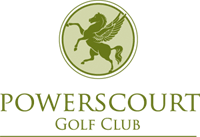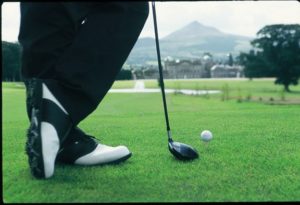“Why does my ball do that?”
“Why does my ball do that?”
Ultimately the efficiency of our swing movements and effectiveness of our skills will be shown up in those 400 micro seconds of the club making contact with the ball at impact. During the time of collision between clubhead and ball a number of factors will influence the balls flight. The effect of these ball flight laws and their relationship to the our swing movements form the basis of the education given to young PGA professionals going through their training to become PGA qualified professional coaches.
The real point of this article is to not to go through all the intricacies of swing positions but to press forward the idea that for any golfer starting with connecting what your ball has just done to what happened at impact with your club is the best way (or the only way in my opinion) to start the process of evaluating ways to improve.
If I can give you an example – let’s say you have pulled the ball left with a 6 iron and someone tells you it is because of a bad grip. Taking this statement literally, it is incorrect. The reason the ball went left is because the clubface at impact was closed (pointing to the left). Of course this closing of the face through the hitting stage may be influenced quite a lot by having a certain grip style but there may also be other things about the swing that could be taken into consideration. If you start of this process by dealing with the impact stage first then you can work out a logical progression in dealing with the problem.
Have a look at the simplified list below of the factors that will influence the shot at impact. (It would be more correct to refer to a 3 dimensional value to some of these factors).
- Where the face is pointing at impact – this will largely determine (but not wholly) the start direction of the shot.
- What the swing path relative to this face position is – these 2 factors together will largely determine (but not wholly) what sort of curvature could be put on the ball.
- How the ball is struck off the face in relation to centeredness – This affects energy transference into the ball as well as a thing called gear effect.
- The speed of the clubhead through impact – the strike and speed can be affected by the quality of hit e.g. did the club hit the turf before the ball.
- What loft is on the club at impact relative to the pre-set design as well as the angle that this clubhead is delivered?
I do not think for a moment that our swing movements are irrelevant but it is probably true to say that these factors above are largely what is going to influence the ball so they have to take pride of place when we want to know why we hit certain shots the way we do. In our example above stopping the ball going left may be helped by a certain grip change but stopping the clubface from pointing left at impact will definitely stop the ball starting left of target. Ask yourself these questions the next time you get an ideal opportunity to hit some balls.
- How did I strike the face with the ball?
- How did I contact the ground with the club?
- Where was the clubface pointing at impact and what was the swing path relative to the face?
- How did I deliver the loft of the club to the ball?
- Was the speed of the club correct for the shot I was playing?
Paul Thompson has been the Fellow PGA Professional at Powerscourt Golf Club in Wicklow since 1995. In addition to providing coaching on-site he also is a coach with The Golfing Union of Ireland. Appointments with Paul can be booked via Powerscourt Golf Club Reception: Tel (01) 204 6033 or the Golf Shop Tel (01) 204 6031. Read more about lessons from Paul Thompson by visiting the Powerscourt Golf Club Website.



